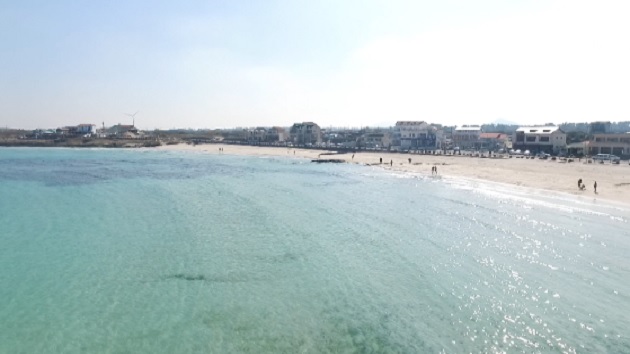
This week on Jeju: A to Z, Todd Thacker takes a brief look at Woljeong-ri Beach, a popular destination on the northeast coast. As we’ll see now, it’s an area that is in very good company with its acclaimed counterparts at Hamdeok and Gimnyeong.
The coast of Woljeong-ri, in the northeastern district of Gujwa-eup, has all the classic natural elements of Jeju. Its white sand, black basalt stone walls, and a crystal-clear sea all come together into a perfect storm of beauty.
This typical Jeju rural village, one centered on agriculture and fishing, has been inhabited for centuries. But about five years ago, the word got out and development began in earnest.
[Slug CG]
1m annual visitors, an official Jeju beach from 2016
Now there are hundreds of cafes, restaurants, and guesthouses to accommodate the flood of visitors, numbering in the 1 million range annually. In 2016, Woljeong was designated an official Jeju beach and change rooms, shower facilities and a tourist information center were installed there.
Though the area may not be as remote and untouched as it once was, rest assured that locals and officials have endeavored to keep this section of Jeju’s coast as intact as possible. This includes its distinctive agricultural and maritime culture, and the traditions of the haenyeo ? Jeju’s diving women.
On that note: this weekend, if you have the chance to explore the Woljeong area and Jeju Olle walking trail No. 20, be sure to check out the Jeju Batdam Festival!
[Slug CG]
2018 Jeju Batdam Festival, Sept. 15-16
This two-day event offers a unique window on Jeju’s agricultural traditions. You can try your hand at building a Jeju traditional stone wall, take a pleasant guided tour, and enjoy a traditional Jeju lunch box, called a donggoryang (동고량).
[Slug CG]
Todd Thacker
There’s plenty more to do and see, so for more information and to sign up, just go to KCTV Jeju’s website.
Todd Thacker KCTV





